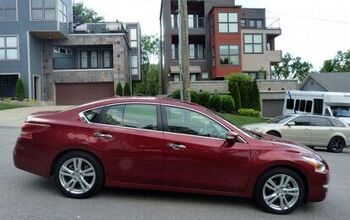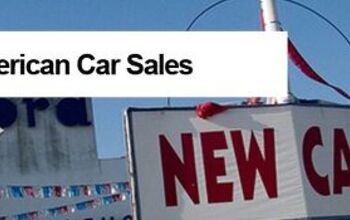Is December the New Normal for U.S. Car Sales?

The New York Times has put out a story saying what’s already on many industry observers’ minds: “The historic collapse of the new-car market dragged on in December, raising questions of whether the auto industry will ever again have sales levels that it took for granted just a few years ago.” The easy credit, hyper-consumerism era had established new car sales in the 16 million per year range. But then along came 2008’s dismal 13.2 million units… and the last half of the year was much worse than the first. Even the former “don’t worry, be happy, better days are just around the bend” cheerleaders have given up. “GM’s chief market analyst, Michael C. DiGiovanni, said the automaker was predicting industry sales of 10.5 million to 12 million vehicles for the year.” Long time industry pundit John Casesa says: “After an era of excess indulgence, we’re now entering a prolonged period of conservation. Trading in a car every three years is a luxury that the average American can no longer afford.” Against that background, one can only wonder what fantasies will be embedded in the new, new, newest turnaround plans GM and Chrysler will hand in to the U.S. Treasury Department a few short weeks from now. No matter what their term papers say, Casesa pegs it: “The internal problems of the Big Three are so great, there is no way they can survive without government help for several years.”
Much of the new car and truck market has been made up of people who wanted new wheels, who “deserved” new wheels and not those who really needed them. Meanwhile, the average age of the fleet on our roads has risen from about six years in the 80s to around nine years now. That 50 percent increase in automotive longevity is both a great technical accomplishment for the industry and a big sales problem.
The old regimen of planned obsolesce driving demand for new cars ran smack dab into import competitors who played by different rules and forced the game to change. For a time, the easy money era masked this dwindling underlying demand brought on by longer lasting vehicles.
In fact, the U.S. now has more registered vehicles than it does licensed drivers (guilt as charged in our home!). The shift from one income to two income households over the past few decades probably has much to do with that as well. But, the demand pumping game has come to a sudden screeching halt and many formerly two income households have been brutally pushed back to one or zero incomes.
Bush 41’s favorite word “prudence” is suddenly back in style. Those consumers who still have jobs are watching their budgets just like grandpa used to.
So where does that leave the underlying demand picture? My guess: around 10-11 million per year for quite a few years to come. If so, almost everyone is in big, big trouble. Marginal players like Chrysler, Mitsubishi, Suzuki, Kia, Jaguar, Land Rover and most of GM’s brands will have no choice but to close up shop in the U.S. Things look bleak for VW/Porsche/Audi as well. VW/Audi hasn’t made a profit in the U.S. in ages, and that was when times were pretty good.
A period of great extinction is once again upon the industry.

More by John Horner
Latest Car Reviews
Read moreLatest Product Reviews
Read moreRecent Comments
- Theflyersfan OK, I'm going to stretch the words "positive change" to the breaking point here, but there might be some positive change going on with the beaver grille here. This picture was at Car and Driver. You'll notice that the grille now dives into a larger lower air intake instead of really standing out in a sea of plastic. In darker colors like this blue, it somewhat conceals the absolute obscene amount of real estate this unneeded monstrosity of a failed styling attempt takes up. The Euro front plate might be hiding some sins as well. You be the judge.
- Theflyersfan I know given the body style they'll sell dozens, but for those of us who grew up wanting a nice Prelude Si with 4WS but our student budgets said no way, it'd be interesting to see if Honda can persuade GenX-ers to open their wallets for one. Civic Type-R powertrain in a coupe body style? Mild hybrid if they have to? The holy grail will still be if Honda gives the ultimate middle finger towards all things EV and hybrid, hides a few engineers in the basement away from spy cameras and leaks, comes up with a limited run of 9,000 rpm engines and gives us the last gasp of the S2000 once again. A send off to remind us of when once they screamed before everything sounds like a whirring appliance.
- Jeff Nice concept car. One can only dream.
- Funky D The problem is not exclusively the cost of the vehicle. The problem is that there are too few use cases for BEVs that couldn't be done by a plug-in hybrid, with the latter having the ability to do long-range trips without requiring lengthy recharging and being better able to function in really cold climates.In our particular case, a plug-in hybrid would run in all electric mode for the vast majority of the miles we would drive on a regular basis. It would also charge faster and the battery replacement should be less expensive than its BEV counterpart.So the answer for me is a polite, but firm NO.
- 3SpeedAutomatic 2012 Ford Escape V6 FWD at 147k miles:Just went thru a heavy maintenance cycle: full brake job with rotors and drums, replace top & bottom radiator hoses, radiator flush, transmission flush, replace valve cover gaskets (still leaks oil, but not as bad as before), & fan belt. Also, #4 fuel injector locked up. About $4.5k spread over 19 months. Sole means of transportation, so don't mind spending the money for reliability. Was going to replace prior to the above maintenance cycle, but COVID screwed up the market ( $4k markup over sticker including $400 for nitrogen in the tires), so bit the bullet. Now serious about replacing, but waiting for used and/or new car prices to fall a bit more. Have my eye on a particular SUV. Last I checked, had a $2.5k discount with great interest rate (better than my CU) for financing. Will keep on driving Escape as long as A/C works. 🚗🚗🚗


































Comments
Join the conversation